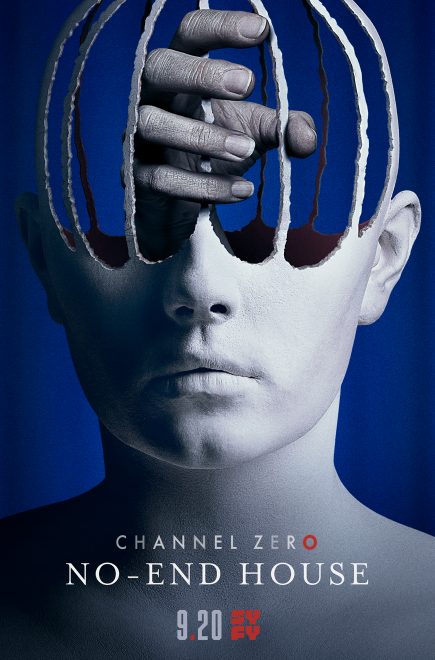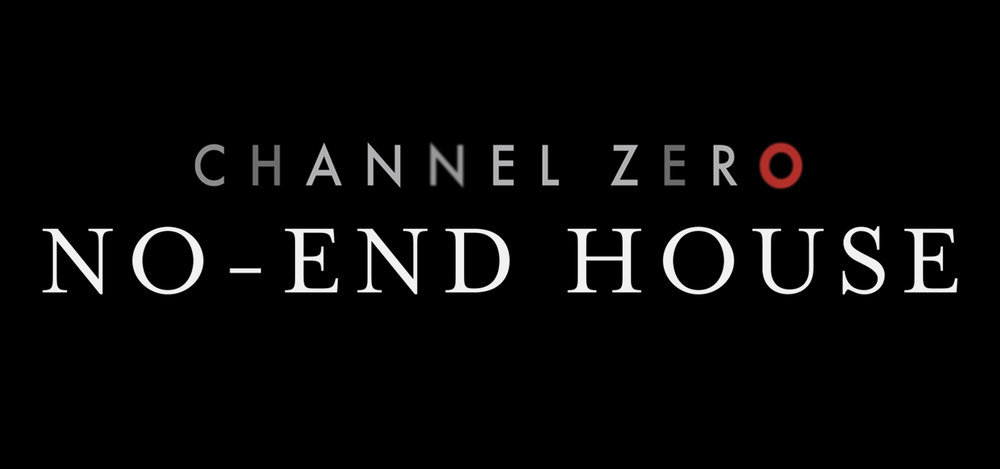
We are now in October again and we are halfway through season 2 of Channel Zero. This season tackles the creepy pasta by Brian Russell called “No End House.” I have yet to read the short story but like last season, I find myself enjoying it while being creeped out at the same time.
The story centers around Margot Sleator (Amy Forsyth), her bestie Jules (Aisha Dee), old childhood friend JD (Seamus Patterson) and obvious love interest Seth (Jeff Ward) lured into a house that doesn’t want them to leave. In fact, it goes out of its way to create a reality to keep them there.
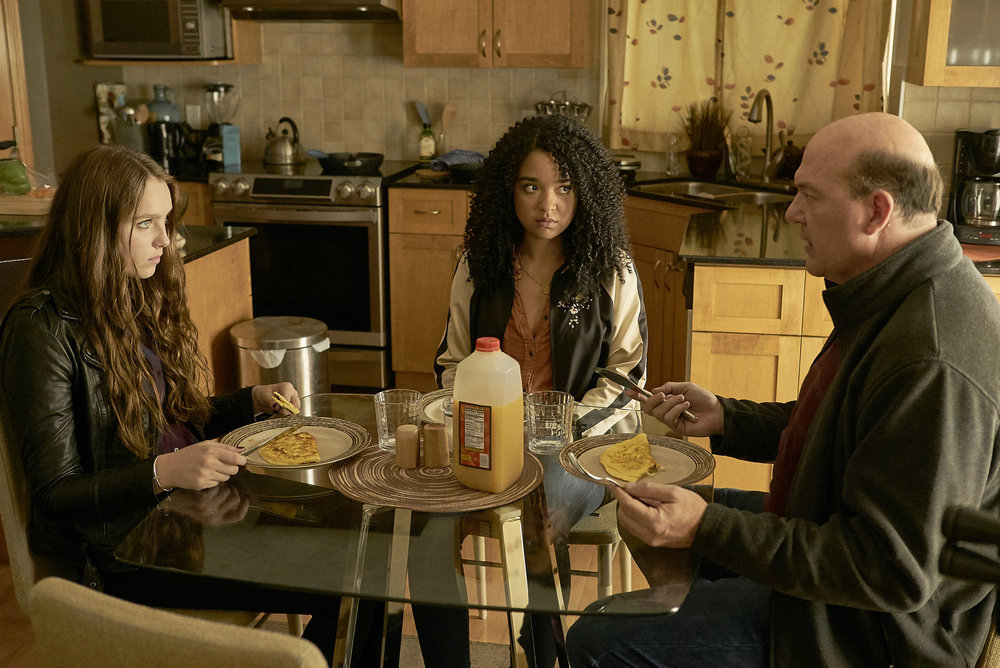
Margot, who still mourns the death of her father John Sleator (John Carroll Lynch), sees him in this altered reality. That’s not the only weird thing about this world. For example JD got whiskey whacked by his doppelgänger. In last week’s episode, Margot saw the light when “Dad’ chased her around the neighborhood. There’s a reason why there was a warning about “beware of the cannibals” before entering No-End House.
Like last year, showrunner Nick Antosca has done an excellent job in selecting the actors playing the main characters. There’s a right amount of creep factor mixed with nuance that adds to the mystery about the house. There have been several twisty moments so far that have made me go…
Antosca was kind enough to give a breakdown of several scenes from the season so far and tease episode 4, which airs Wednesday October 11 at 10 pm Eastern/Pacific. This conversation was over the course of three separate calls so I tried to arrange so it flowed better talking about elements from each episode so far. Enjoy!
TNE: Hi, Nick, how are you doing?
Nick Antosca: Good, how are you, Natasha?
TNE: I’m good. I thought it was interesting with the clay featuring their faces, and how all of them was cracked open except for one. We do kind of figure that out in Episode 2 or 3, but why cracked open? Like, why not a different, I guess, symbolic…
Nick Antosca: The first room is a statement of intent on the part of the house.
TNE: Ah. Got you.
Nick Antosca: It’s going to lay you out.
TNE: Yes, mentally.
Nick Antosca: Exactly. What are the sculptures? It’s an image of you broken open, and it’s extracting stuff from inside your head. It’s ominous. And it’s pretty clear —especially once you know what the house does later, what’s being said in that first room.
Also, I wanted to showcase the sculptures of Sarah Sitkin, who’s an artist I like, and who did that work. And she does stuff like that. And if you go on her website, you can see that she had created a few sculptures in that style, so I thought that would be a perfect way to express what the house does to you, and showcase her work.
TNE: So, was there a potential for Margot to not continue after Door Number 2? Because it seemed like the dude whispered in her ear, and then she was like, “I need to go on.”
So, was the hesitation the reason why he had to whisper in her ear, or just – he just needed to do that to maybe get her friends to even go continue on?
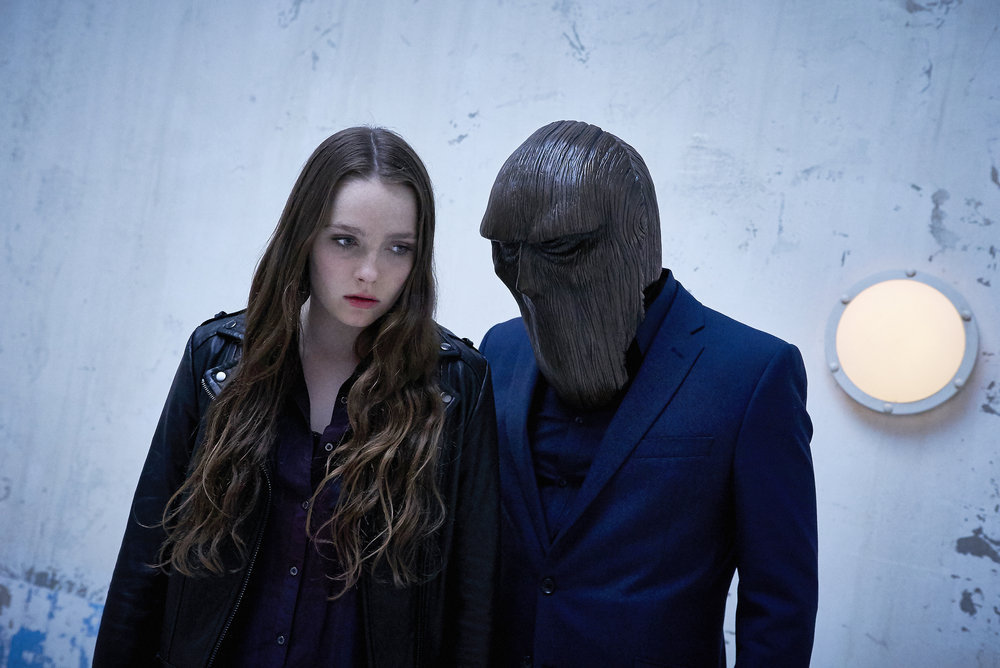
Nick Antosca: Well, I don’t want to explain too much about the mythology, but Margot could have easily walked out of the first room. She could have easily walked out of the second room. It gets a little harder after that.
Once the house separates you from your friends, there’s a kind of winnowing process. And once she’s in Room 5, the house kind of has already picked her. And she’s gone all the way through.
So, the deeper into the house you go, the deeper the house goes into you. This is the basic core idea of how the house works. And the deeper it gets its claws into you, the harder it is for you to leave.
TNE: I was curious about the guy that Margot saw behind the mirror, because she was always afraid of that. That was one of the fears that she mentioned earlier in the episode.
So, was the guy, like, your first choice of something that was behind the mirror, or were you thinking of something else, maybe, and he was, like, the final decision? It just seems (totally) random. And he was really creepy too, by the way.
Nick Antosca: Yes. That’s a character actor from Winnipeg who had come in for a couple other things, and I liked his look.
That room is a room that digs into your dreams, and shows them to you, and digs into your fears. I wanted each character that goes into that room to have something they remember from childhood — a random but specific fear — shown to them.
Like when I was a kid, I was afraid of a neighbor at my grandmother’s house. This is a guy who looked creepy. You know? Like I’m sure it was a perfectly nice guy, but you remember these things from when you’re five or six years old. Every time you walked by that house, you know, that guy’s looking at me or something.
And for Margot, that’s all that is. It’s one of those things that sticks in your memory. And the house is poking and prodding and trying to find those things.
TNE: I noticed that, initially, when Margot was seeing images from the Channel House, luring her to go there, I noticed that the images were kind of like showing her father in the beginning. Was that even, like, foreshadowing into what she was going to see at No-End House? Or that was just the Channel House trying to figure her out? Yes.
Nick Antosca: Yes. People get personalized messages from the No-End House. And that stuff – all that strange, blueish, morphy footage is – all that stuff was shot and done by Guy Maddin and his team. Guy Maddin is an indie filmmaker who I’ve admired for a long time.
And he lives in Winnipeg, where we shoot. So, we were able to get him to come, and hang out, and do some stuff for Channel Zero, which was a thrill of this season.
TNE: Yes, I thought the imagery was good too, so thank you for that. I noticed that last year for Candle Cove, the show — or the little puppet show — tried to reach viewers through technology. like the TV in even cell phones. But in No-End House, while it teases with the modern technology, once you get to the end, nothing seems to be working.
But there is hints of that already. So, I’m just wondering if there’s a limitation to the house, in regards to maintaining the illusion, as far as using technology.
Nick Antosca: Well, you’ll see in future episodes that technology gets a little wonky when you’re close to or inside the house. And so, you’re absolutely right. And there’s some other limitations to technology when they’re in the false realities that the house creates, as you will see in future episodes.
But what you point out about basically malevolent entities reaching out to people through technology is a theme of Creepypasta, in general. The Lost Episodes, Candle Cove, of course, Smile Dog — a lot of the well-known Creepypasta stories deal with fears and anxieties about technology. So, that is something that will recur throughout the seasons of Channel Zero.
TNE: Thank you. I was wondering about that. I’m like, yes, just limit everybody’s access. I’m just wondering how the actors reacted to just like not having cellphones, or not having their car working.
Nick Antosca: The house has to stop you from being able to document it too much.
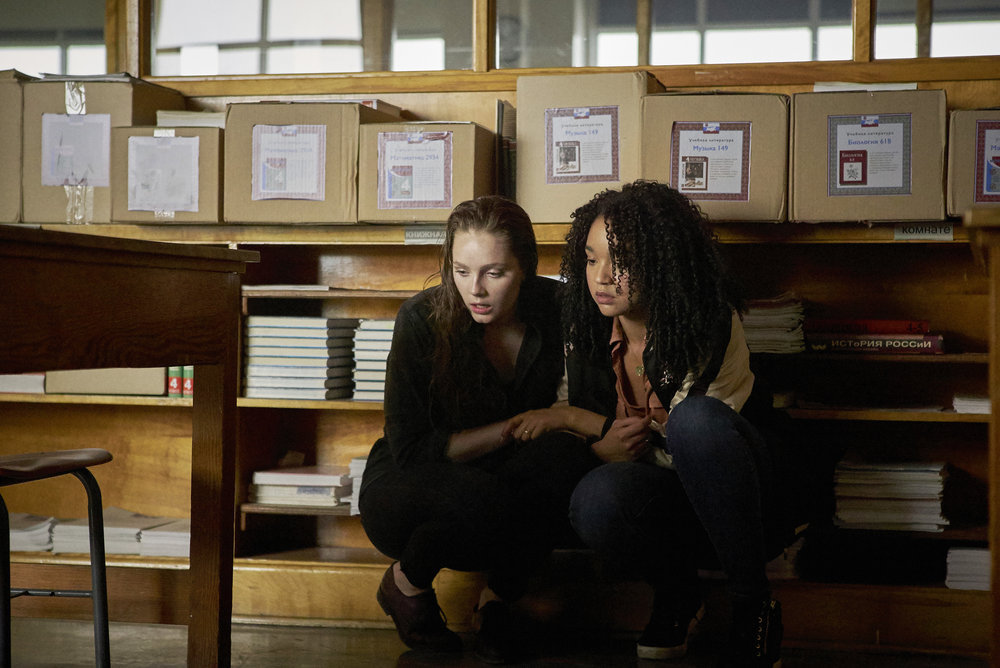
TNE: True, true. I noticed that the focus while it is on Margo you do seem to focus a little bit more on the friendship between Margo and Jules. And compared to last season where you focused on the family life between the two brothers with Channel Zero.
Was that something that you wanted to include this year as well as focus on female characters, versus like Seth and you know the other guy becoming like side characters more than main characters.
Nick Antosca: Yes, I mean Margo is the protagonist of the season and in terms of her journey we wanted to focus on three elements of a young person’s life and experiences three key relationships.
One with a parent, one with a best friend, one with a romantic interest. And ultimately – I mean the story, her journey is about how she deals with each of those relationships.
Two of them are toxic in some way and one of them isn’t. And in a way it is a story about her choosing which relationship is most important to her.
TNE: I was wondering the husband that Dylan killed, I was wondering the purpose of him trying to, you know, keep Lacey. Was it because of – he’s a cannibal trying to suck her memories or just – he’s just weird like that? I just – it just seemed a little weird.
Nick Antosca: No. That’s exactly right. When people come into the house — in the House World, as we call it — they have projections. Those projections — which you could also call cannibals — are actually those memories that eat other memories. There’s something drawn from your psyche, from your subconscious, and it can manifest as a person, as it does in Margot’s case, as her father, or in Lacey’s case as this dream husband figure. Or it could be multiple people, or it could be something else entirely — something stranger and more abstract.
In Lacey’s case it is this idealized husband figure, and just like Margot’s father, it wants to keep her in House World so it can feed on her memories.
TNE: The whole scene with John and Margot and her finding the head — pretty much — of her mother in the trash can, was he even remotely genuine as far as his reasoning for being obvious about that? I mean, is – was he really expecting her to just (unintelligible) do whatever, tie into the rest of her memories?
Nick Antosca: Well I think he is – he’s earnest in the way that a junkie family member might be. I mean, you could have a loved one who genuinely cares about you but also is an addict and really needs your money, and they might plead with you in the same way that he pleads with her there. So I think it’s a balancing act. Like, he does love her and he really feels the feelings that he’s expressing, but he’s hungry.
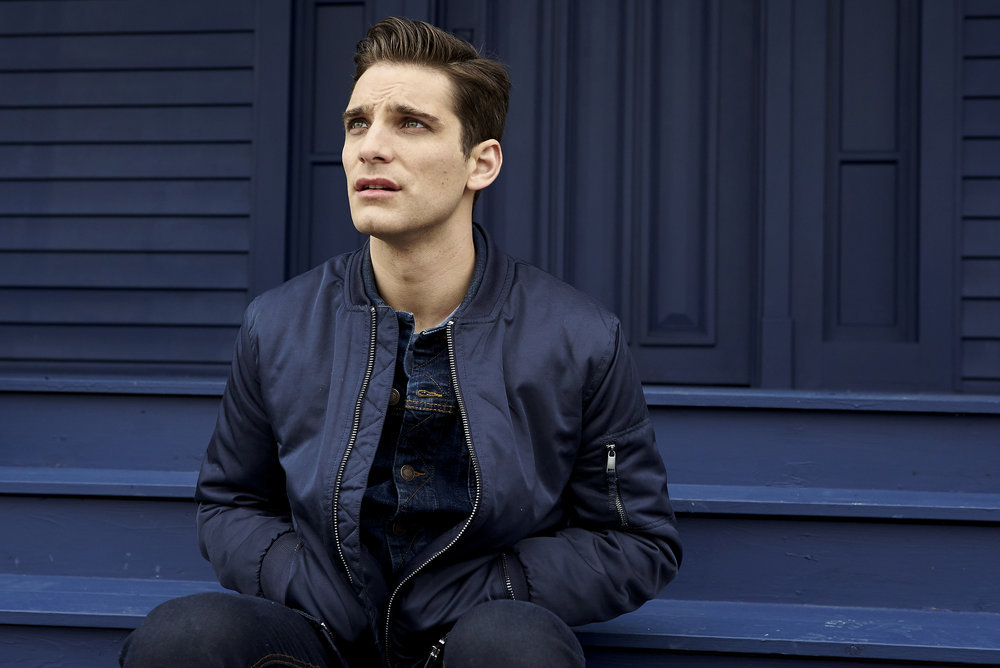
TNE: So I managed to catch the first three episodes. I didn’t want to spoil myself too much with the last three. But I noticed that the character of Seth was a little bit of a wild card.
What is up with him and why is he not surprised by some of the things that are happening? If you can answer that.
Nick Antosca: I will not answer with spoilers but I will say that the character is played by Jeff Ward who I cast because he has a particular ability to be both charming and creepy.
For example, I think he played Charles Manson on some other show. And it was very important for the role of Seth to be a bit ambiguous I will just say that. And you are right to notice that he has a complicated reaction to the stuff that he encountered in No-End House.
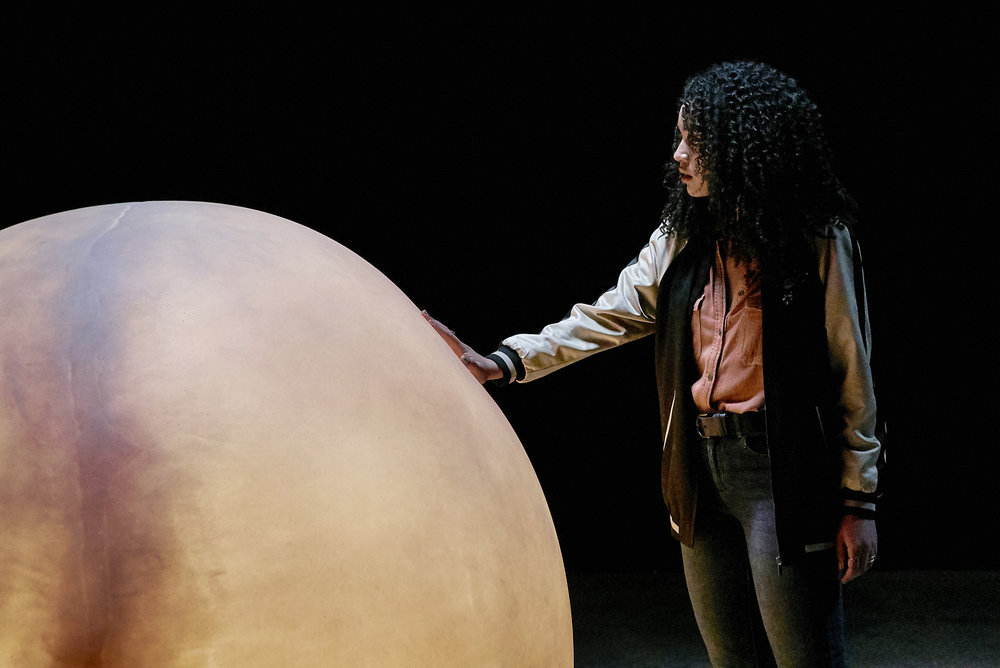
TNE: I was looking at the scene with, you know, Jules and the ball that’s, like, sucking her memories. Does it seem like she’s in pain or is it she’s getting some kind of pleasure out of that? It just seems a little iffy to me? I don’t know if you could clarify that or is it just the way that Aisha just, like, interpreted that scene?
Nick Antosca: It’s a combination of both. We call it the embryo. That is something that ties into Jules’ past and experience. In Margot’s case, her projection is something very literal. In Jules’ case, it’s something a little more abstract and mysterious. And Jules is a very closed-off, repressed person who is afraid of emotion and vulnerability. What the projection is doing to her in those scenes causes both pleasure and pain.
TNE: That’s fair. And have we seen the last of Margot’s dad?
Nick Antosca: Oh no. Of course not.
TNE: Why orchids? As the flower of choice to make it seem a little weird.
Nick Antosca: I have always found orchids to be a little strange and sinister. And there is a particular reason why we chose orchids and you will see why in Episode 4.
TNE: And what [else] can you tease about Episode 4?
Nick Antosca: Episode 4 is our Wizard of Oz episode. Strange as that may sound, it’s the episode where our characters have to make a dangerous journey and where somebody’s true identity is revealed.
That was a good tease! Can’t wait!
What do you think of No-End House so far? Sound off in the comments!

